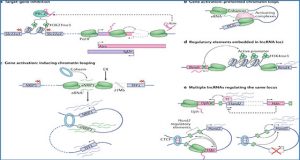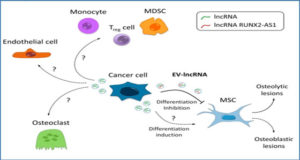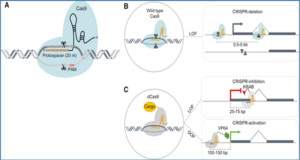Long non-coding RNAs (lncRNAs) interact with the nuclear architecture and are involved in fundamental biological mechanisms, such as imprinting, histone-code regulation, gene activation, gene repression, lineage determination, and cell proliferation, all by regulating gene expression. Understanding the lncRNA regulation of transcriptional or post-transcriptional gene regulation expands our knowledge of disease. Several associations between altered lncRNA function and gene expression have been linked to clinical disease phenotypes. Early advances have been made in developing lncRNAs as biomarkers. Several mouse models reveal that human lncRNAs have very diverse functions. Their involvement in gene and genome regulation as well as disease underscores the importance of lncRNA-mediated regulatory networks. Because of their tissue-specific expression potential, their function as activators or repressors, and their selective targeting of genes, lncRNAs are of potential therapeutic interest. The authors review the regulatory mechanisms of lncRNAs, their major functional principles, and discuss their role in Mendelian disorders, cancer, cardiovascular disease, and neurological disorders.
- Maass PG, Luft FC, Bähring S. (2014) Long non-coding RNA in health and disease. J Mol Med (Berl) [Epub ahead of print]. [abstract]
 lncRNA Blog lncRNA Research and Industry News
lncRNA Blog lncRNA Research and Industry News







